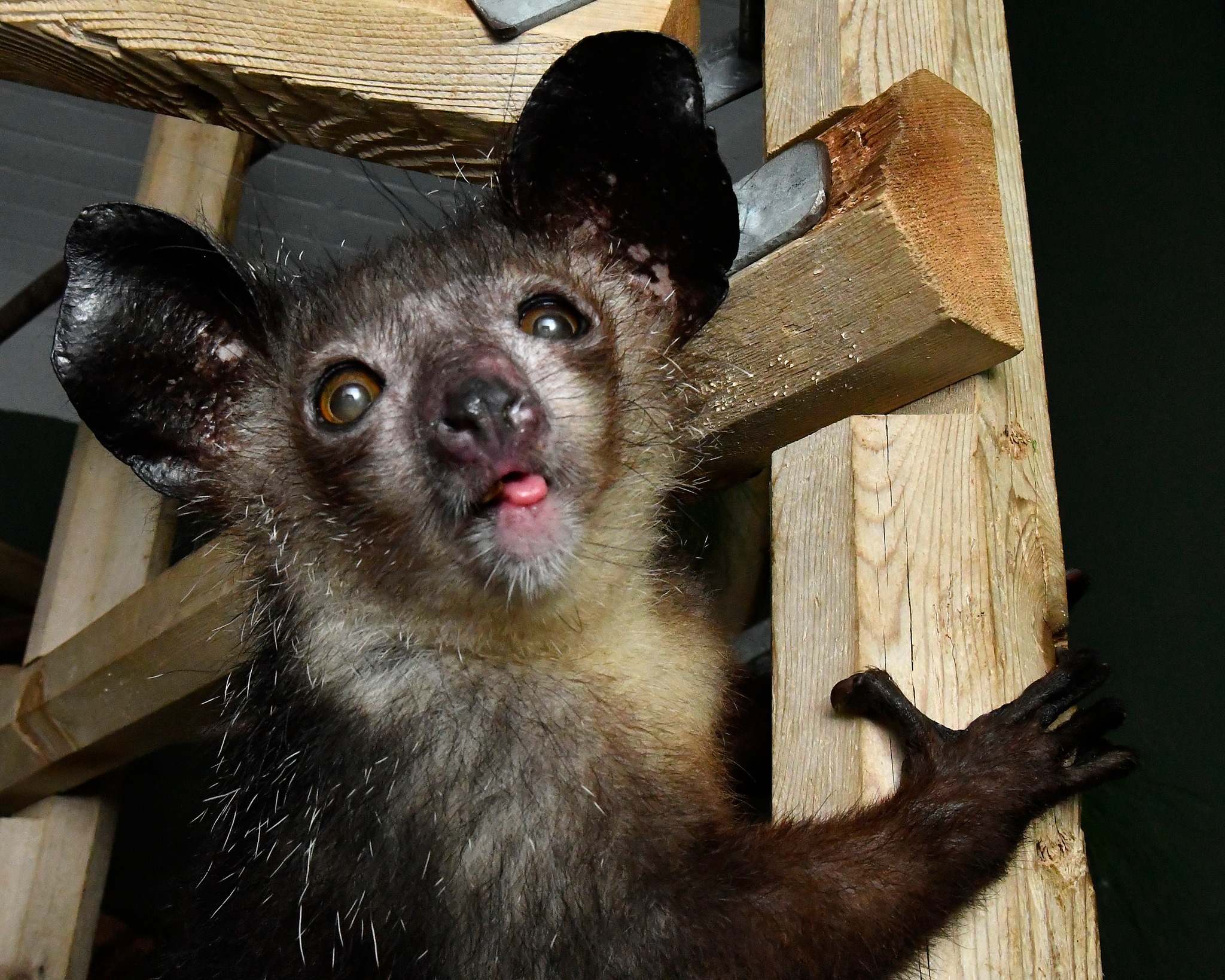– Discover the enchanting world of the aye-aye, a unique primate with singular traits.
– Uncover the story of Poe, the aye-aye whose longevity defies the odds and gives insights into wildlife conservation.
– Explore the dedicated efforts of the Duke Lemur Center in studying and protecting these extraordinary creatures.
When you step into the Duke Lemur Center (DLC), you enter a realm where the rare and enigmatic aye-aye thrives, an otherworldly creature that looks like it stepped out of a whimsical folktale. Among these reclusive nocturnal primates, an individual has captured the hearts and curiosities of all who meet him. His name is Poe, and at 36 years old, he is not only the oldest known aye-aye in captivity but a symbol of hope for a species on the brink.
Often characterized as the stuff of legend, the aye-aye, native to Madagascar, is unlike any other animal. It boasts an assortment of features that appear as if mish-mashed from various creatures – large eyes reminiscent of an owl, elongated fingers seeming to be borrowed from a horror story, and a bushy tail akin to that of a squirrel. Yet, these unique traits serve a specific purpose for their survival.
In the lush canopies of Madagascar, the aye-aye is a master of foraging. Its middle finger, skeletal and dexterous, is used to tap on wood, listening for the echo that indicates hollow chambers where grubs might reside. Once located, that same ghoulish finger skewers its insect prey or scoops pulp from fruit with surgeon-like precision. Its specialized teeth continuously grow, enabling the aye-aye to gnaw through wood like a beaver.
Poe’s longevity is compelling, considering the average lifespan of an aye-aye in captivity is mid-20s, while wild individuals often live significantly shorter lives. The tale of Poe is one steeped in the understanding and dedication it takes to look after a species that many might find less appealing or overshadowed by more charismatic fauna.
The Duke Lemur Center, home to Poe and many other lemurs, is critical in conserving Madagascar’s biodiversity. Lemurs, including the aye-aye, are found nowhere else in the world and are among the most endangered mammals. The DLC’s efforts to breed, study, and protect these animals are crucial to preventing extinction.
One crucial aspect of their work focuses on understanding lemur biology and behavior, allowing them to fine-tune the care of these animals. Poe’s day-to-day life is enriched with tasks that stimulate his natural foraging behaviors, puzzles that engage his intelligence, and an environment that mimics the dense forests of his homeland. This attention to detail is a testament to the DLC’s commitment to providing their lemurs with the highest level of care.
The research stemming from the DLC has far-reaching implications for conservation practices. Through studying aging lemurs like Poe, scientists can gather valuable data about genetics, nutrition, and health care that inform strategies for protecting endangered species. Whether pioneering new health assessments or shaping the diets for geriatric lemurs, the insights gained offer a blueprint for the well-being of lemurs and aging animals across the captive wildlife spectrum.
It’s not just the scientific community that finds value in these endeavors. Poe and his compatriots serve as ambassadors for Madagascar’s biodiversity. They stand at the frontline of education, often sparking a sense of wonder and recognition of the need for conservation among visitors. The narrative of Poe’s life sheds light on the broader story of environmental stewardship. No matter how unconventional in appearance or behavior, every individual is vital to life’s tapestry.
This brings us to an important consideration of how we perceive and interact with nature. Creatures like the aye-aye remind us of nature’s boundless imagination. Their existence challenges us to look beyond aesthetics and recognize the intrinsic value of all living beings. It is a call to action, inspiring us to protect the myriad of species, each playing an integral role in their ecosystems, regardless of their popularity or charm.
Moreover, Poe serves as a living exhibit of the benefits of sustainable practices. As humans, we are part of a much larger ecological network where each species, including our own, is interconnected. By safeguarding habitats and biodiversity, we preserve the balance necessary for the health of our planet. Every effort to conserve a species, from supporting places like the DLC to reducing our environmental impact, contributes to this balance.
The story of a 36-year-old aye-aye thriving in a sanctuary devoted to preservation is more than just an uplifting anecdote; it symbolizes the triumph of resiliency and human empathy. It provides a lens through which we see the tangible results of conservation work—extending a life well into its twilight years, teeming with curiosity and vigor.
In closing, let us reflect on the lessons from Poe’s life and the endeavors at the DLC. As stewards of our natural world, we hold the future of countless species in our hands. The well-being of creatures like the aye-aye and the precious ecosystems they inhabit depends on our choices and actions. From the enchanted forests of Madagascar to the hearts of those who have beheld an aye-aye’s enigmatic charm, Poe’s legacy continues to resonate, echoing a call to preserve the wild wonders we are privileged to share this Earth with.
As you navigate your day, consider how we can be a part of the collective effort to make our planet a thriving home for all its inhabitants. Let us draw inspiration from the dedication of those who work tirelessly to conserve our biodiversity. Let us recognize the beauty in the peculiar, the importance of the overlooked, and the profound impact even the smallest action can have in safeguarding our shared natural heritage. Poe’s story is a beacon of hope, a reminder that every species has its place and purpose, and in protecting them, we protect ourselves.
*****
Source Description
It is an unparalleled game from 36-year-old Aye-aye Poe, the oldest resident at the DLC 😛
📸: David Haring

